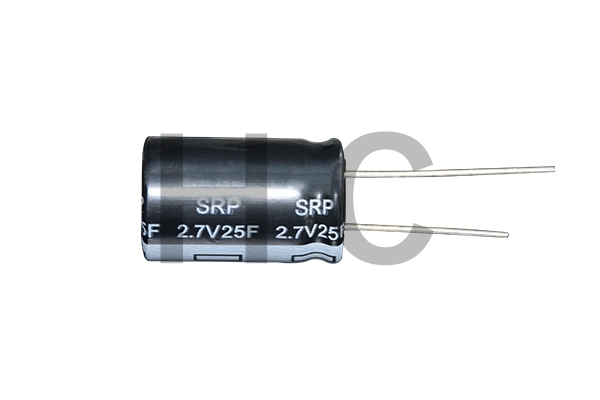Pick Specification Modifications
For the selection of supercapacitors, power requirements, discharge time and system voltage changes play a decisive role. The output voltage drop of the supercapacitor manufacturer consists of two parts, one part is the energy released by the supercapacitor; the other part is caused by the internal resistance of the supercapacitor. Which of the two parts is dominant depends on the time. In very fast pulses, the internal resistance part is dominant, while in long-duration discharge, the capacitive part is dominant.
parameter selection
The following basic parameters determine the size of the capacitor chosen: Supercapacitor module. Working voltage; Working cut-off voltage; Uniform discharge current; How long is the discharge time.
Compared with batteries, supercapacitors have the following characteristics:

Ultra-low series equivalent resistance (LOW ESR), power density (Power Density) is dozens of times that of lithium-ion batteries, suitable for high-current discharge (a 4.7F capacitor can release more than 18A instantaneous current).
Super long life, charging and discharging more than 500,000 times, which is 500 times that of Li-Ion batteries and 1,000 times that of Ni-MH and Ni-Cd batteries. If the Farad capacitor is charged and discharged 20 times a day, it can be used continuously for 68 years.
It can be charged with high current, the charging and discharging time is short, the requirements for the charging circuit are simple, and there is no memory effect.
Farad capacitors are unprotected and can be sealed.
Wide temperature range -40℃~+70℃, general battery is -20℃~60℃.

Supercapacitors can be connected in series and parallel to form a supercapacitor module, which can withstand pressure and store higher capacity.
Specific selection method:
Supercapacitors are different from batteries and may be superior to batteries in some applications. Sometimes a combination of the two is a better approach, combining the power characteristics of a capacitor with the high energy storage of a battery.
The supercapacitor module can be charged to any potential within its extra voltage range, and can be completely discharged. The battery is restricted by its own chemical reaction to operate in a narrow voltage range, and may be damaged if overdischarged.
Supercapacitors are capable of fast charging and batteries are compromised by fast charging.
Supercapacitors can be repeatedly cycled hundreds of thousands of times, while battery life is only a few hundred cycles.
